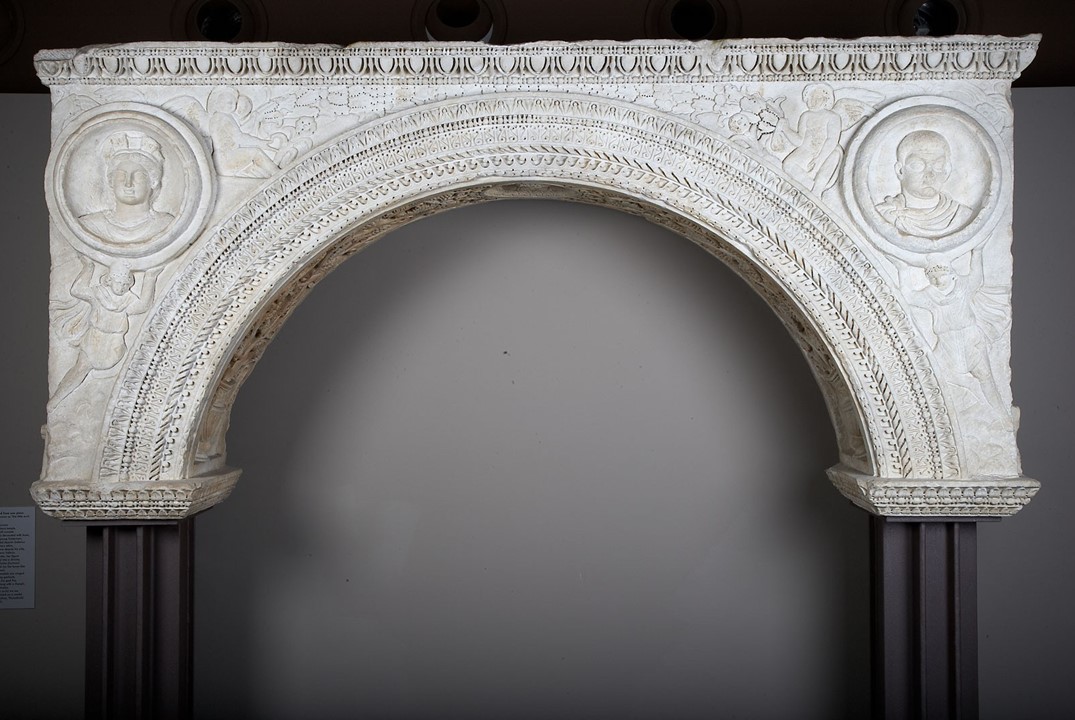
“The Galerian Complex, the most important monumental group in Thessaloniki, was built at the turning-point of two worlds, the Roman and Byzantine. Its erection began in the late 3rd century-early 4th century AD when the Caesar Galerius Valerianus Maximianus (293-311 AD) chose Thessaloniki as the seat of the eastern part of the Roman Empire.” The Small Arch of Galerius found in the Octagon area of the Complex, valued and cherished, is exhibited today in the Archaeological Museum of Thessaloniki. http://galeriuspalace.culture.gr/en/
One of the most important buildings within the Galerian Complex, the Octagon is a significant and luxurious structure worth exploring. It was the first important building that visitors arriving at the Palace by sea would enter and be dazzled. Facing the glorious Thermaic Golf of Thessaloniki, the Octagon is massive and opulent. All Palace buildings were meant to impress the visitor and set the tone… the Octagon area did an excellent job!
Excavation of this amazing structure started in 1950 and continued up until 1981, bringing to light all that survives today. A splendid conservation and restoration program continued and in 2008, the archaeological site of the Palace of Galerius in Thessaloniki was awarded a EUROPA NOSTRA medal by the European Union. Today, the Galerian Complex, right in the heart of the city, is one of the most popular archaeological sites in Thessaloniki.
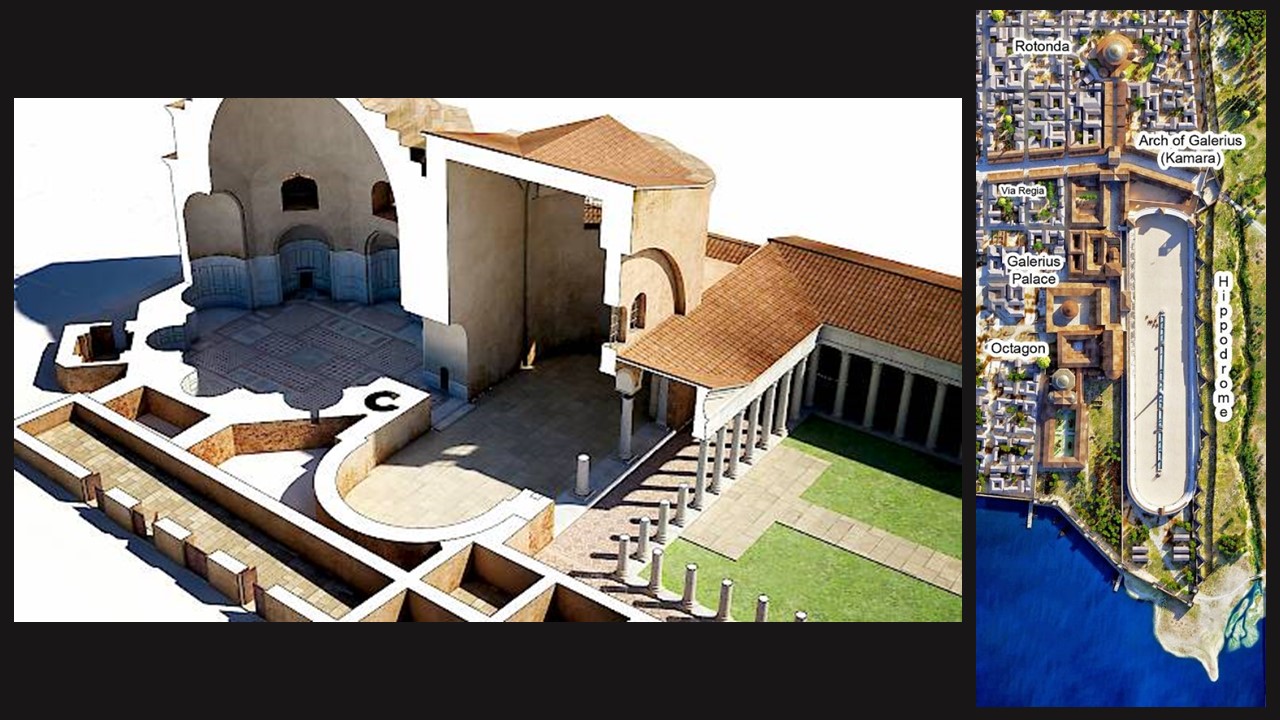
… Agathoniki was on an official visit to the Court of Emperor Galerius in Thessaloniki… powerful and rich, she was treated with respect for her age and the loyal services extended to the Emperor… She was modestly dressed but her gifts to the Emperor were valuable and exotic, coming all the way from Seres, the mythical lands of the East. She was guided to enter the Palace Complex through the grand, South Peristyle Court, its Porticos adorned with magnificent floor mosaics and a beautiful garden in the center. It was her first visit to Thessaloniki and she enjoyed every single thing she saw… she was, however, on a mission, so she briskly walked through a triple arch, a Tribelon with two columns, to enter an impressive Vestibule with two semi-circular niches on its narrow ends. She stopped for a minute to compose herself, reflect on her mission, and confidently entered the grandest room of the Palace… the domed Octagon! The room was magnificent! Its walls were covered with multicoloured marble revetments and square panels intricately worked in the opus sectile technique. The floor, featuring marble geometric motifs, created simple yet elegant chromatic oppositions… and there were four different Emblemata, right where she was standing, worthy of a great master! What a wonderful Audience Hall this is, she thought, as the entrance of the Emperor brought her to her knees…
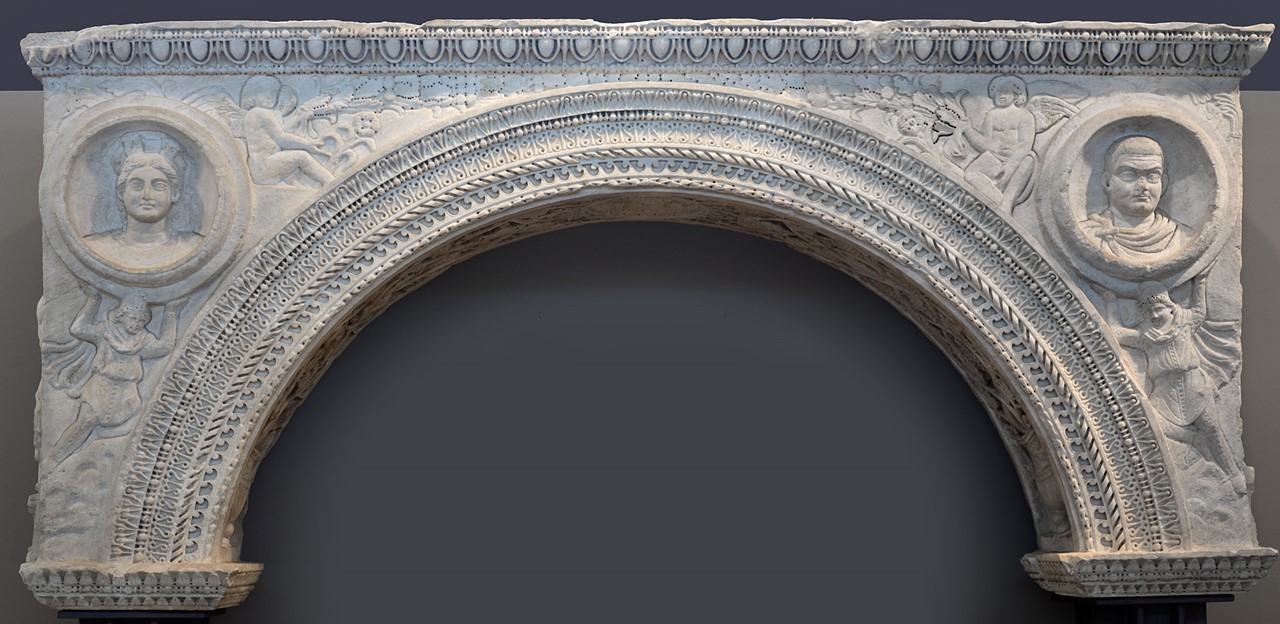
Agathoniki, the imaginary visitor of our story, saw many more wonderful rooms and artefacts in the Palace of Galerius… My favourite artefact, still surviving today, is a small, marble Arch. Discovered at the north end of the eastern portico of the South Peristyle Court, the Small Marble Arch crowned a horseshoe-shaped niche framed by pilasters. This Arch, known by the conventional name “The Small Arch of Galerius”, is on display in the Archaeological Museum of Thessaloniki. Could this small, luxuriously adorned, niche be a Palace Temple?
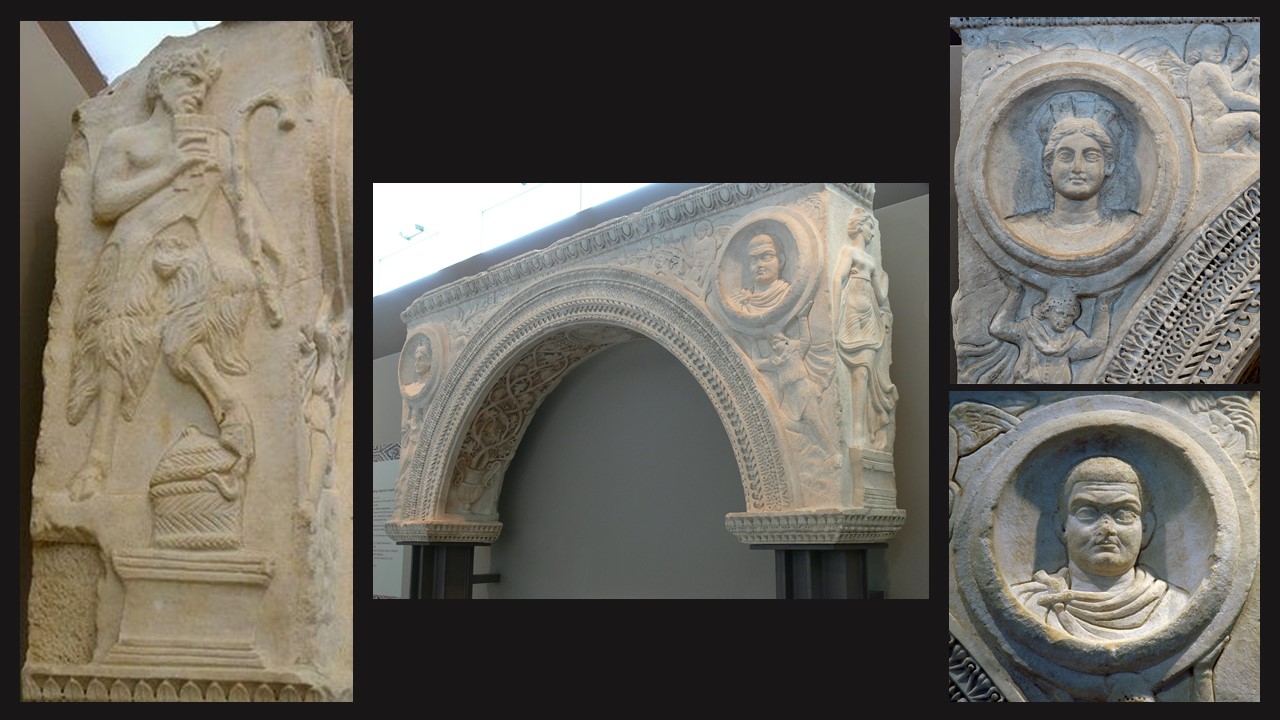
This Arch, known today as “The Small Arch of Galerius”, is on display in the Archaeological Museum of Thessaloniki. According to Thessaloniki Museum experts, “The arch, a work of high artistic quality, is the product of a local workshop in Thessaloniki. The rich relief decorations occupy three sides of the arch. The main side depicts two men from the East, possibly Persians, raising two circular medallions with their hands. The right medallion depicts Gaius Galerius Valerius Maximianus, while the left one initially depicted his wife, Galeria Valeria. During a later intervention, after Galerius’ death, a mural crown was added to the female portrait. This alteration transformed the female bust into the depiction of a deity, most probably the “Tyche (fortune) of Thessaloniki”, who accompanied Galerius, the deified ruler of the city. Two winged Eros figures holding a garland fill the space between the medallions. Another medallion with a bust of Dionysos is located at the inner part of the arch, surrounded by vine branches. The right side of the arch depicts the hooved god Pan playing a pipe and holding a lagobolon (stick for hunting hares). The left side depicts a maenad.” http://galeriuspalace.culture.gr/en/monuments/oktagono/ and https://www.amth.gr/en/exhibitions/highlights
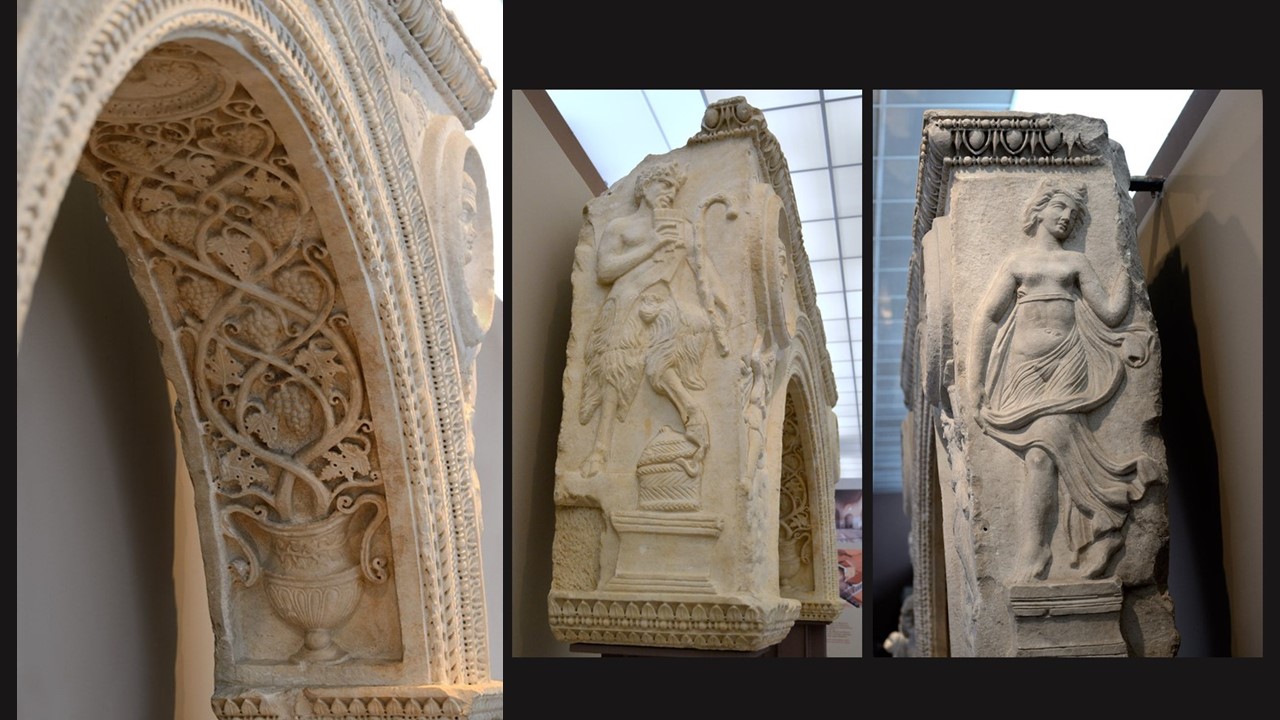
Along with my Grade 6 students, we study the history of Thessaloniki, visit the Archaeological Site of the Galerian Complex and prepare a RWAP (Research-Writing-Art-Project) that they thoroughly enjoy…
For a PowerPoint on the Galerian Complex Octagon Hall, please click HERE!
For a student RWAP on the Small Arch of Galerius, please click HERE!
For examples of Student RWAP Work, please click HERE!
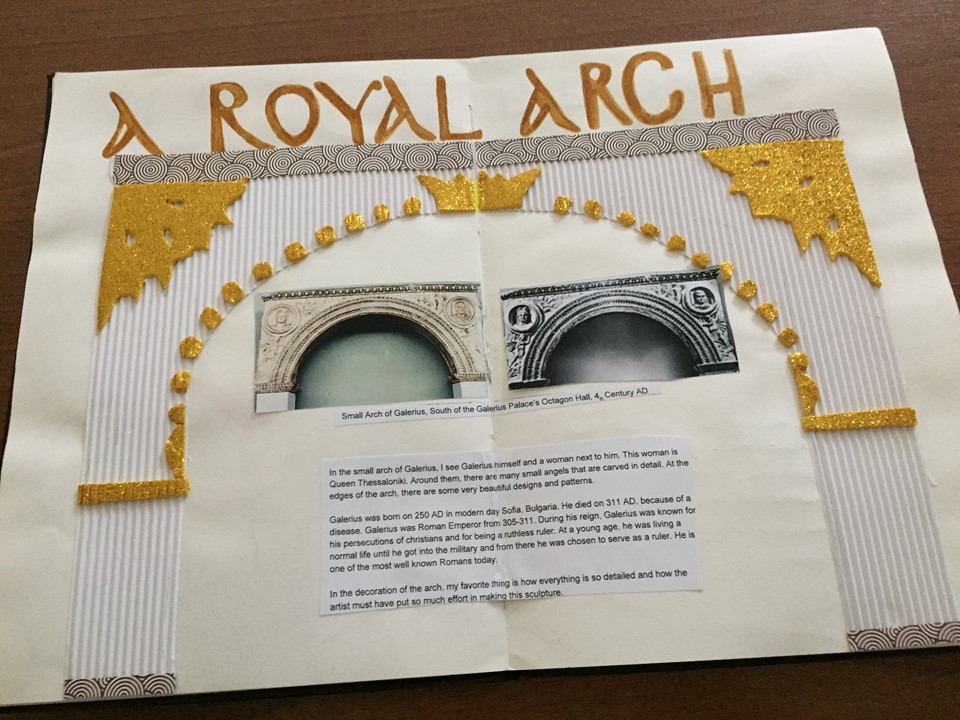
RWAP stands for Research – Writing – Art – Project